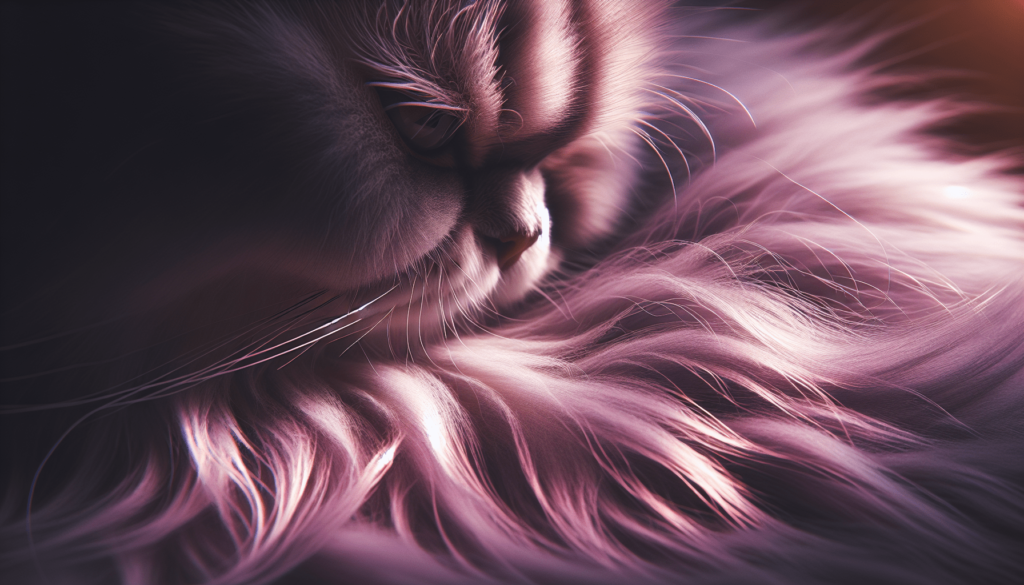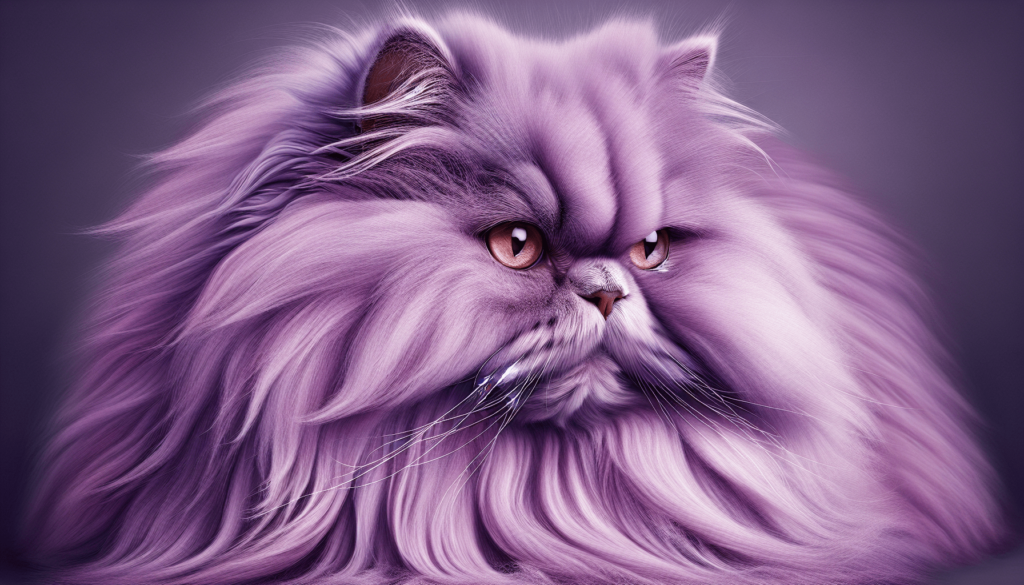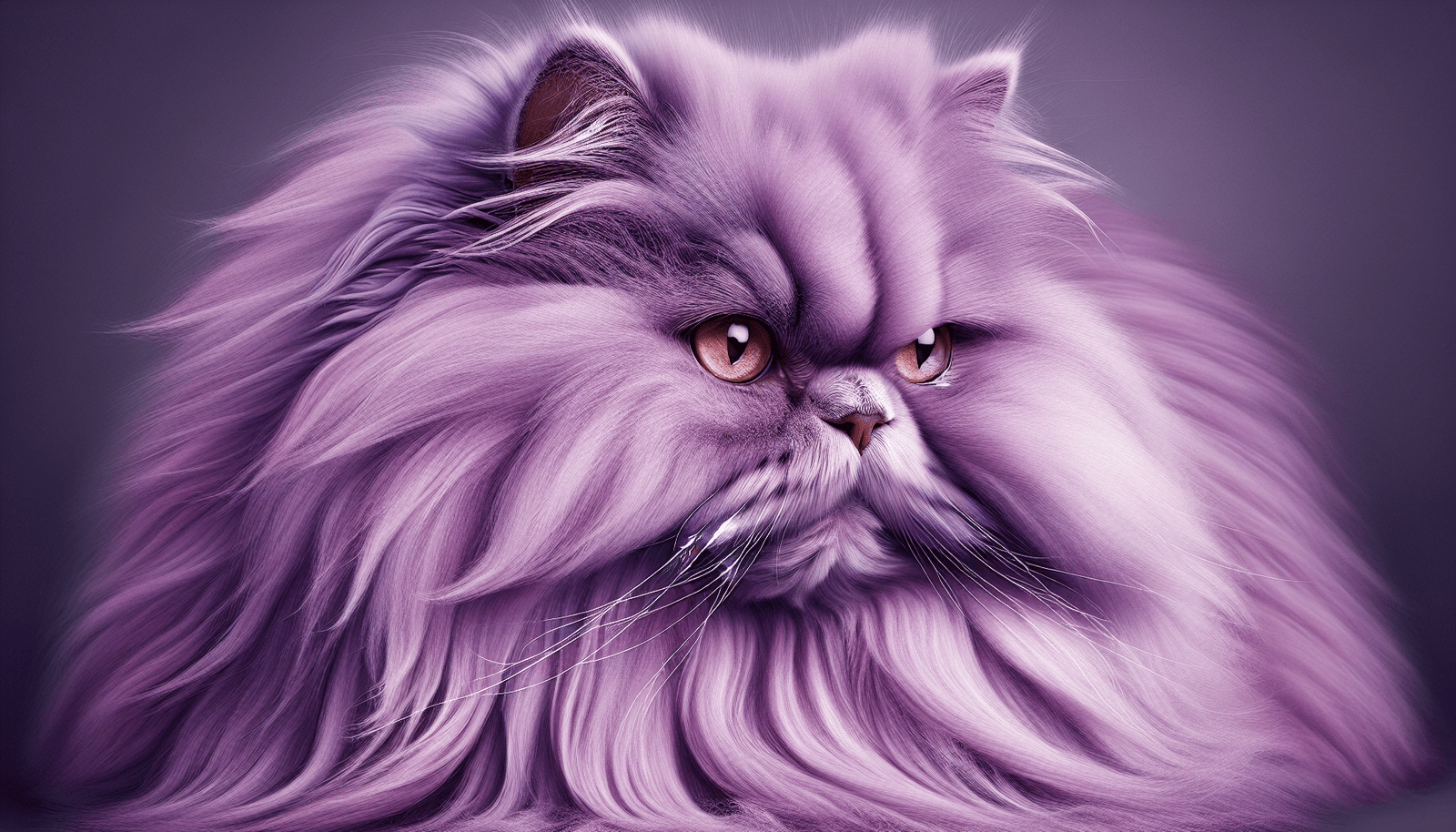Have you ever wondered if lilac is a solid color in Persian cats? Well, in this article, we will explore the fascinating world of Persian cats and delve into the concept of lilac as a solid color. Persian cats are known for their luxurious coat and a wide range of color variations. While some colors may appear solid at first glance, they often contain subtle nuances that add depth and uniqueness to each cat’s appearance. Join us as we uncover the mysteries behind lilac in Persian cats and discover the beauty that lies within this captivating color.
Understanding Persian Cats
Persian cats are one of the most beloved and recognizable cat breeds in the world. Known for their luxurious and long-haired coats, they have a distinct appearance that sets them apart from other feline companions. In this article, we will explore the characteristics of Persian cats, specifically focusing on the topic of their coat colors.
Overview of Persian Cats
Persian cats are an ancient breed that originated in Persia, now modern-day Iran. They have been adored for centuries due to their gentle nature and unique physical features. These cats are medium to large in size, with a round face, large eyes, and a short nose. However, it’s the Persian cat’s long and flowing coat that truly captivates admirers.

Characteristics of Persian Cats
One of the defining characteristics of Persian cats is their coat, which is dense, silky, and oh-so-fluffy. Their long hair requires regular grooming to prevent matting and keep their coat in pristine condition. Persian cats come in a variety of colors, including solid colors, patterned colors, and dilute colors. Let’s delve into each of these categories in more detail.
Persian Cat Coat Colors
Solid Colors
Solid colors in Persian cats refer to coats that have a uniform hue without any visible patterns or variations. These colors can range from black and white to shades of cream, red, and blue. Each solid color has its own unique characteristics and allure.
Patterned Colors
Patterned colors, on the other hand, exhibit distinct markings or patterns on the cat’s coat. These patterns can include stripes, spots, or swirls, adding another layer of charm to the already beautiful Persian cat. Some examples of patterned colors include tabby, tortoiseshell, and calico.
Dilute Colors
Dilute colors are those in which the original color appears lighter or diluted due to a genetic mutation. For example, a dilute version of black would be blue, and a dilute version of red would be cream. These dilute colors add a touch of softness to the Persian cat’s coat, giving them an ethereal and dreamy quality.

What is a Solid Color?
Definition of Solid Color
A solid color in the context of cat coats refers to a coat that lacks any noticeable patterns, markings, or variations. It is a uniform color throughout the cat’s body, giving them a sleek and polished appearance. Solid colors are highly sought after in many cat breeds, including Persian cats, due to their elegance and refined presence.
Characteristics of Solid Colors in Cats
Solid colored cats have a certain timeless beauty that many owners find irresistible. Their allure lies in their simplicity, as their coat color becomes the main focal point. Whether it’s a rich black, a creamy white, or a regal blue, solid colored Persian cats exude a classic and sophisticated charm. Their coat color is consistent from head to tail, enhancing their overall elegance.
Lilac Color in Persian Cats
What is Lilac Color?
Lilac color in Persian cats is a beautiful and delicate hue that falls under the category of dilute colors. It is a lighter version of chocolate, resulting from a dilution gene. The lilac coat color is often described as a pale, muted lavender, resembling the color of lilac flowers. It is a sought-after and unique color in the Persian cat breed, casting an enchanting spell on cat enthusiasts.
Origin of Lilac Color in Persian Cats
The origin of the lilac color in Persian cats can be traced back to genetic variations. This dilution gene affects the way pigments are produced and distributed in the cat’s body, resulting in the lighter and softer lilac color. While the exact origin of this dilution gene is still a subject of study, breeders have managed to produce lilac-colored Persian cats through careful breeding and selection.
Appearance of Lilac Color
Lilac-colored Persian cats have a distinct and alluring appearance. Their coat is a charming combination of creamy tones with hints of lavender. The dilution gene gives their coat a slightly washed-out look, which highlights the delicate beauty of the lilac color. When a lilac-colored Persian cat walks into a room, their ethereal presence captivates all who lay eyes on them.
Lilac Solid Color or Not?
Different Opinions on Lilac as a Solid Color
The classification of lilac as a solid color in Persian cats has sparked a lively debate among cat enthusiasts, breeders, and experts. Some argue that lilac should be considered a solid color, while others believe it falls under the dilute color category. Understanding both perspectives is essential to grasp the complexity of this topic fully.
Arguments for Lilac as a Solid Color
Proponents of lilac being a solid color emphasize the uniformity of the coat’s hue. They argue that, just like other solid colors, lilac cats lack any noticeable patterns or markings, making them eligible for the solid color classification. Advocates also argue that lilac-colored Persian cats possess all the key characteristics of solid colors, such as a consistent coat color from head to tail.
Arguments against Lilac as a Solid Color
Opposing arguments state that lilac should not be considered a solid color due to its dilute nature. They argue that the dilution gene present in lilac-colored Persian cats alters the color pigments, resulting in a lighter and washed-out appearance. This deviation from the true solid color definition is the main reason why some believe lilac belongs to the dilute color category instead.
Breed Standards and Registrations
Influence of Breed Standards
Breed standards play a crucial role in determining how specific coat colors are recognized and classified within a breed. These standards act as guidelines set forth by breed organizations to maintain the integrity and authenticity of a particular breed. The influence of breed standards on the classification of lilac as a solid color in Persian cats cannot be overlooked.
Registration Organizations and their Stance on Lilac Color
Different registration organizations have varying perspectives on the classification of lilac as a solid color in Persian cats. Some organizations recognize lilac as a solid color, while others categorize it as a dilute color. The differing stances of these organizations contribute to the ongoing debate surrounding the true status of lilac in Persian cats.
Genetic Factors
Understanding Color Genetics in Persian Cats
To truly comprehend the complexities of coat colors in Persian cats, it is essential to delve into the realm of genetics. Genetic factors play a significant role in determining the color and patterns seen in a cat’s coat. The study of color genetics helps us understand how coat colors, including lilac, are inherited and expressed in Persian cats.
Inheritance of Solid Colors
The inheritance of solid colors in Persian cats follows specific genetic patterns. While it can be influenced by various factors, the solid color gene can be passed down from generation to generation. Understanding the inheritance patterns provides valuable insights into how certain coat colors are maintained and perpetuated within the breed.
Genetic Basis of Lilac Color
The genetic basis of the lilac color in Persian cats revolves around the dilution gene. This gene alters the production and distribution of color pigments, resulting in the lighter and softer lilac hue. Understanding the role of this gene and its interaction with other genetic factors is crucial in comprehending the classification of lilac as a solid color.
Other Factors Affecting Coat Color
Environmental Factors
While genetics plays a significant role in determining coat colors, environmental factors can also influence the appearance of a Persian cat’s coat. Sunlight, temperature, and nutrition are just a few examples of factors that can affect the intensity and quality of colors in a cat’s coat. However, it is important to note that these environmental factors are secondary to the genetic predispositions of the cat.
Health Conditions
Certain health conditions can cause changes in a Persian cat’s coat color. Some illnesses may result in the loss of pigmentation, leading to a change in coat color. It is always recommended to closely monitor a cat’s health and consult with a veterinarian if there are any concerning changes in their coat color.
Age and Coat Color Changes
As Persian cats age, their coat colors may undergo subtle or significant changes. Kittens may be born with a lighter coat color that deepens as they mature, while older cats may experience fading or graying of their once vibrant coat. These age-related changes can add to the complexity surrounding the classification of lilac as a solid color.
Experts’ Opinion on Lilac Color
Persian Cat Breeders’ Perspective
Persian cat breeders, who work closely with these magnificent felines, have their own perspectives on the classification of lilac as a solid color. Some breeders believe that, due to the uniformity of the lilac coat, it should be considered solid. Others have reservations due to the dilute nature of lilac and advocate for its placement among the dilute colors.
Veterinarian and Geneticist Insights
Veterinarians and geneticists also offer unique insights into the debate surrounding the classification of lilac as a solid color. Their in-depth knowledge of coat color genetics and their experience with a wide range of cats provide valuable perspectives on this issue. While opinions may differ, their expertise sheds light on the genetic and biological factors influencing coat colors in Persian cats.
Conclusion
In conclusion, the topic of whether lilac is a solid color in Persian cats continues to evoke passionate debates among cat enthusiasts, breeders, and experts. The nuances surrounding coat colors and the genetic factors that influence them contribute to the complexity of this discussion. While breed standards and registration organizations play a role in defining and categorizing colors, the interpretation and understanding of lilac as a solid color ultimately lie in the eyes of the beholder.
Summary of Findings
Throughout this article, we have explored the characteristics of Persian cats, focusing on their coat colors. Solid colors, patterned colors, and dilute colors all contribute to the mesmerizing allure of Persian cats. Lilac color, a captivating dilute hue, has aroused debate regarding its classification as a solid color. Opinions on this matter vary, with arguments presented for and against lilac as a solid. Breed standards, registration organizations, genetics, and various other factors all contribute to the complex tapestry of this topic.
Final Thoughts on Lilac as a Solid Color in Persian Cats
The question of whether lilac is a solid color in Persian cats remains unanswered definitively. As more research is conducted and opinions continue to evolve, our understanding of coat colors in Persian cats may become clearer. Whether lilac is ultimately classified as a solid color or a dilute color, there is no denying the enchanting beauty and elegance that Persian cats, in all their color variations, bring into our lives.

